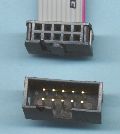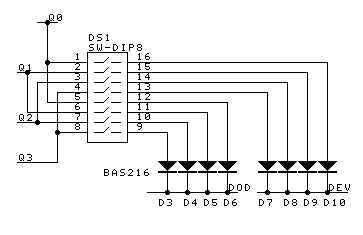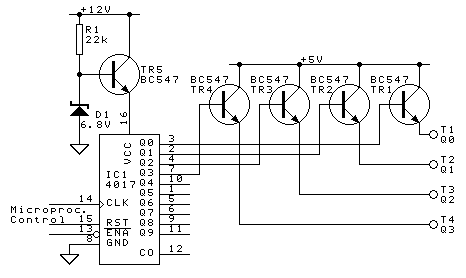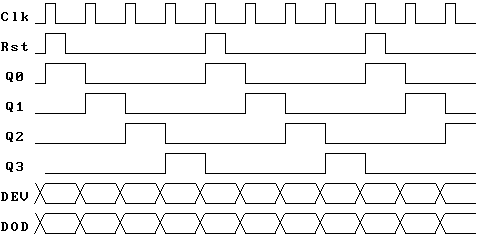| ||||||
|
©2010 AirBorn
|

Picobus - timing informationThis page expands on our basic picobus information page, by illustrating the timing of the bus.Typically the "Qn" timing on the Picobus will be handled by the scanning microprocessor. The scanning microprocessor may generate the Q0/Q1/Q2/Q3 signals directly, but more likely there will be an external counter or decoder run by the microprocessor. While only 4 lines are shown on picobus, the timing allows for up to 10 multiplexed signals total. A typical circuit is below:
The typical timing involves the microprocessor issuing a clock pulse once every multiplex period. Most implementations will have the Reset signal pulsed once every 'n' multiplex periods. The data being sent out to multiplex devices (as distinct from the data being read back from these devices) is changed just prior to the new clock edge. For this reason, it is most suitable to have some port lines (for instance and preferentially DEV) as outputs, and others (for instance and preferentially DOD) as inputs if required. A typical timing diagram is shown below.
One of the real advantages of Picobus, is that even though it includes power, ground, and i2c signals, the multiplexing leaves enough signals available so that "8 wide" devices such a DIP-switch can still be connected.
 This page had a Maintenance update: 23 April 2013 | |||||

